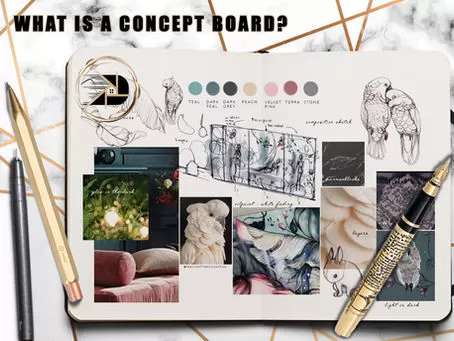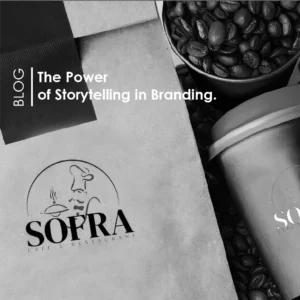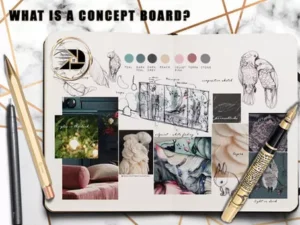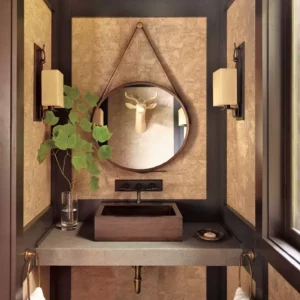What is a concept board? Design-itude’s initial design steps to develop a concept board: What distinguishes the concept board’s elements are all the facts and sparks obtained from the client brief.
At the client briefing meeting, the client needs to provide as much knowledge as possible about their lifestyle in general and, more importantly, about their favourite colours, materials, needs, interests, and hobbies.
Anything that can help plan and build a final, relaxing environment for the userto suit their needs. At this initial stage, insight is often very relevant to how the client dresses or how they act to understand more about what they enjoy or may not like and understand more about the look that the client desires.
After the client briefing meeting, we analyse the brief to illustrate keywords and all client interests to apply to the project. We seek to come out of this session with a starting line that defines the potential.
Following that, we will launch the creative process from this analysis: the concept board. Accordingly, the concept board can be defined as the path that the project will be directed in-line withthe client’s brief.

But what is the concept board, physically ?
Materially, it is a visual display of the theme, atmosphere, colours, textures that we want to use in the space, which can clarify the overall feeling and the final look through these components.
It is made of only carefully chosen photographs to reflect the atmosphere and the feeling we would like to achieve in the space, at its final product.
Typically, we like to build our concept boards as a digital page because it allows us more flexibility in terms of imagination and then prints them on our specially crafted boards to make customer presentations more effective.

But why is it important to always start with a concept board ?
The idea is beneficial at the early stage of the project as a reference tool for us and the client.
The client will appreciate the colour scheme, the textures and the general feeling, and the designer will have the client’s consent and signoff before going on and developing the Sample Board.
When done correctly, as an orchestrated presentation of the designer’s thoughts and suggestions, it is avaluable medium to convey the design ideas to the client accurately.
The designer’s pros are also not to lose track where, as part of the product, the textures, curtains, wallpapers, etc., can be overloaded. In this way, the designer will still have a guide to go back to the original tracks and review the initial targets.
Are you interested in learning more about the design process? Please contact us for a free consultation meeting.





